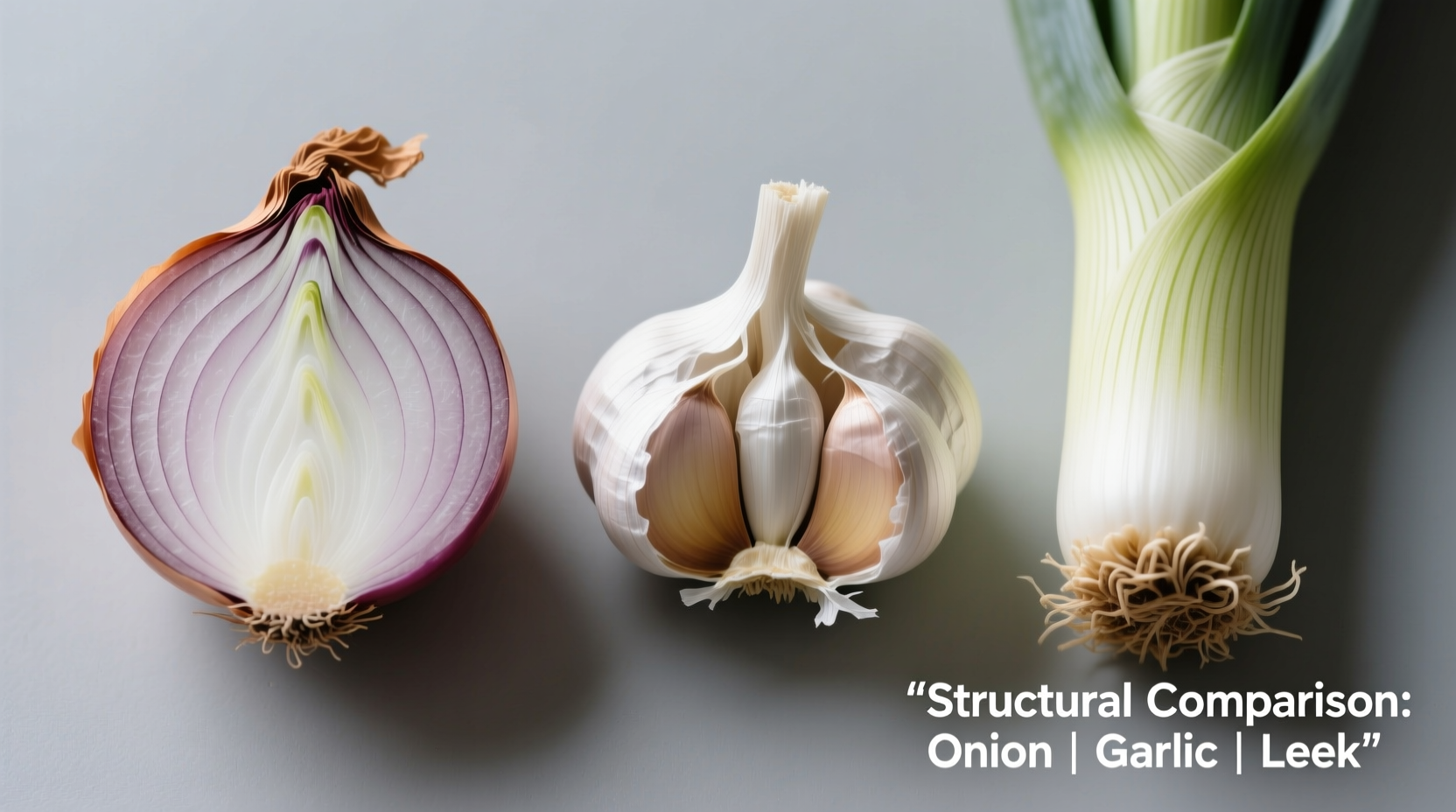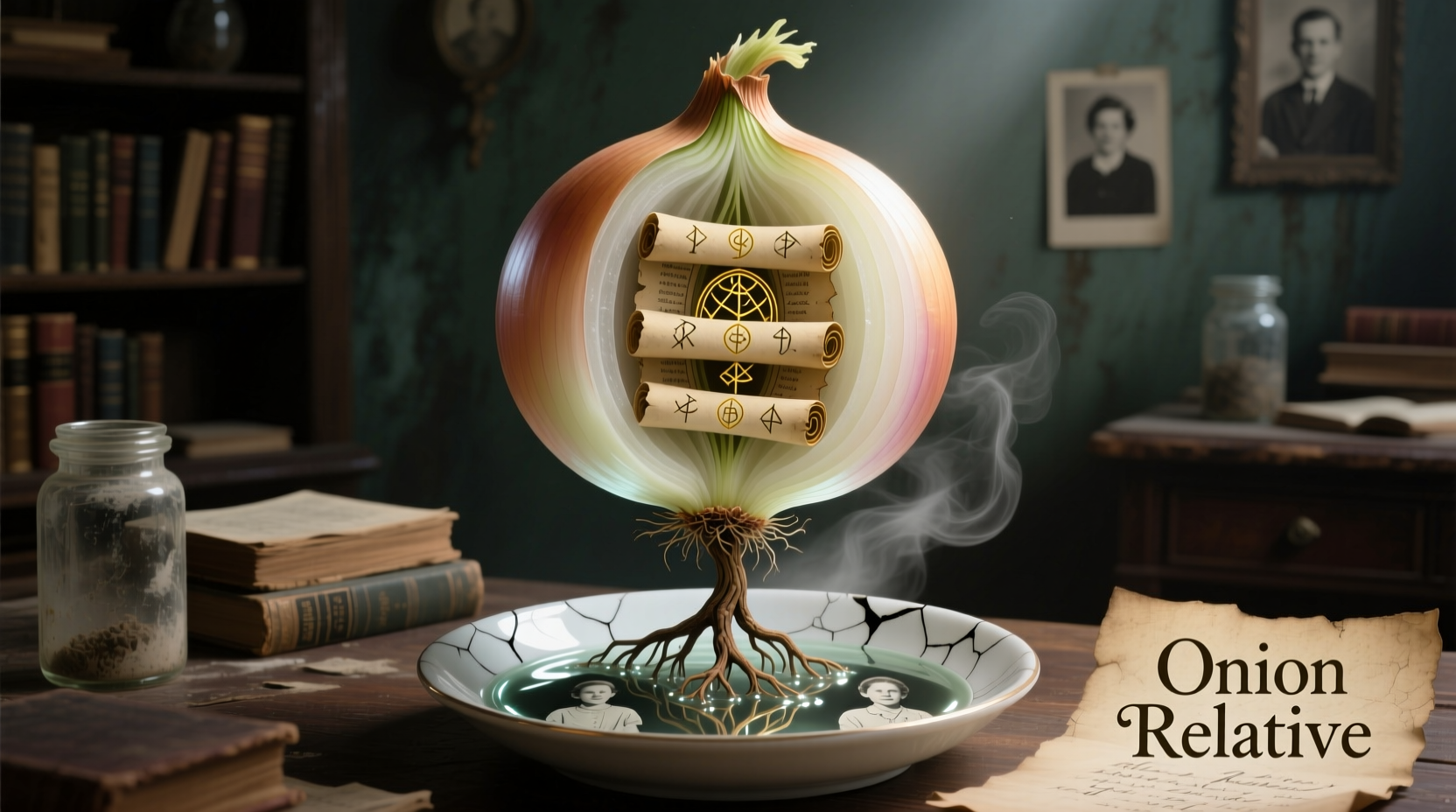Understanding which plants qualify as onion relatives transforms how you approach cooking, gardening, and even meal planning. Whether you're selecting the perfect substitute for a recipe or designing a kitchen garden, knowing the relationships between these plants helps you make informed decisions that enhance flavor profiles and growing success.
What Defines an Onion Relative Botanically
Plants classified as onion relatives belong to the Allium genus within the Amaryllidaceae family. These species share three defining characteristics that distinguish them from other plants:
- Bulb structure - Most develop layered bulbs (though some like chives grow from rhizomes)
- Sulfur compounds - Produce allicin and related compounds when cut or crushed
- Flower structure - Typically form spherical umbels with six-petaled flowers
These botanical features create the pungent aromas and flavors we associate with this plant family. When damaged, the plants release enzymes that convert sulfoxides into sulfenic acids, which then form the characteristic volatile compounds responsible for both their distinctive smells and health-promoting properties.
| Allium Species | Flavor Intensity | Best Culinary Uses | Harvest Season |
|---|---|---|---|
| Common Onion (Allium cepa) | Medium to strong | Sauces, roasting, caramelizing | Late summer to fall |
| Garlic (Allium sativum) | Strong to very strong | Flavor base, infused oils, roasting | Mid to late summer |
| Leek (Allium ampeloprasum) | Mild to medium | Soups, stews, braising | Year-round (peak winter) |
| Chives (Allium schoenoprasum) | Mild | Garnishes, salads, compound butters | Spring through fall |
| Shallot (Allium cepa var. aggregatum) | Mild to medium | Vinaigrettes, delicate sauces, roasting | Summer to early fall |
Visual Identification Guide for Common Allium Varieties
Recognizing different Allium species prevents culinary mistakes and ensures proper harvesting. While they share family characteristics, each has distinctive features:

Onions form single, rounded bulbs with papery outer skins ranging from white to red. When cut crosswise, they reveal concentric rings. Garlic grows in cloves clustered within a protective sheath, with each clove having its own papery covering. Leeks develop thick, cylindrical white stems with flat leaves, lacking a defined bulb structure. Chives grow as grass-like clumps with hollow, tubular leaves and purple flower heads. Shallots form elongated bulbs that often grow in clusters, with coppery skin and interior divisions resembling garlic.
Culinary Applications and Substitution Guidelines
Understanding flavor intensity and chemical composition helps you make successful substitutions when a specific Allium isn't available. The key principle: milder varieties generally substitute better for stronger ones than vice versa.
When substituting, consider these evidence-based guidelines from culinary research conducted by the Royal Horticultural Society:
- Use 2 parts leek for 1 part onion in soups and stews
- Replace garlic with 3 parts shallot for more delicate sauces
- Substitute chives for scallions in equal amounts for garnishes
- Use garlic powder at 1/8 the volume of fresh garlic
These substitutions work because they account for the varying concentrations of allyl sulfides that create each plant's distinctive flavor profile. The USDA Plants Database confirms these chemical differences affect how each Allium interacts with other ingredients during cooking.
Growing Conditions and Garden Planning
Successful cultivation of Allium relatives requires understanding their shared needs and specific requirements. All members of this family prefer:
- Well-drained soil with pH between 6.0-7.5
- Full sun exposure (minimum 6 hours daily)
- Moderate watering (avoid waterlogged conditions)
However, specific varieties have different temperature preferences. Garlic requires cold exposure to form proper bulbs, while onions need specific day-length conditions. The University of Minnesota Extension notes that hardneck garlic varieties need 4-8 weeks below 50°F (10°C) to develop bulbs properly, while softneck varieties grow better in warmer climates.
Avoid planting Alliums in the same garden spot more than once every three years to prevent soil-borne diseases. Rotate with legumes or brassicas for optimal soil health. Companion planting with carrots and beets improves growth while deterring pests naturally.
Preservation Techniques for Maximum Flavor Retention
Different Allium species require specific preservation methods to maintain their unique flavor compounds. Research from food science journals indicates that allicin—the compound responsible for many health benefits—begins degrading immediately after cutting.
For optimal preservation:
- Store whole onions in cool, dark, well-ventilated spaces (not refrigerated)
- Keep garlic at room temperature away from direct sunlight
- Freeze chopped chives in ice cube trays with water or oil
- Pickle shallots for extended shelf life while maintaining flavor
- Dry leek leaves for use in soups and stocks
Understanding these preservation differences ensures you maintain both flavor integrity and nutritional value. The National Center for Home Food Preservation confirms that proper storage methods can extend the usability of Allium crops by 300-500% compared to improper storage.
Avoiding Common Allium Growing and Cooking Mistakes
Even experienced gardeners and cooks make preventable errors with onion relatives. These evidence-based recommendations help avoid common pitfalls:
- Don't plant in heavy clay soil - Allium roots need excellent drainage to prevent rot
- Avoid overwatering after bulb formation - Excess moisture causes splitting
- Don't cook garlic at high heat - Burns easily, becoming bitter (max 325°F/163°C)
- Never use aluminum cookware with onions - Causes discoloration and metallic taste
- Don't store cut onions with other produce - Ethylene gas accelerates spoilage
These guidelines come from decades of agricultural research documented by land-grant universities across multiple growing zones. Following them significantly improves both garden yields and culinary results.











 浙公网安备
33010002000092号
浙公网安备
33010002000092号 浙B2-20120091-4
浙B2-20120091-4